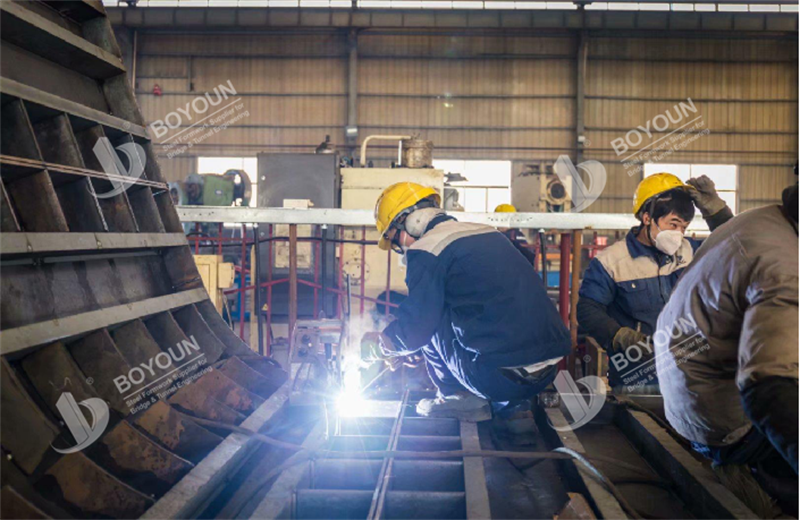The connection of steel structures is inseparable from welding. How to determine the weld grade for different parts? This article will briefly introduce the classification and inspection methods of relevant weld grades.

(1) Weld grade: Conventionally divided into first-class welds, second-class welds, and third-class welds. This concept is only mentioned in the "Code for Welding of Steel Structures" and the "Code for Design of Steel Structures".
(2) Inspection quality level of detection technology: As the name suggests, this level is the detection level requirement of relevant detection technologies. In other words, it is the requirement for the accuracy, depth, and scope of detection. For example, ultrasonic waves are divided into A to C, and the detection requirements gradually increase from A to C.
(3) Internal quality assessment level of weld inspection: It is mainly divided into grades I to IV, which vary depending on different detection methods. Grade I has the highest requirement. This grade is mainly the classification requirement for internal weld defects. The fewer the defects, the higher the classification.
Importance: First-class welds refer to welds that have an important impact on the overall stability and bearing capacity of the structure, while second-class welds refer to welds that have a relatively smaller impact on the overall stability and bearing capacity of the structure.
Quality requirements: The quality requirements for first-class welds are higher, with strict regulations on both internal and external weld defects. The quality requirements for second-class welds are relatively lower.
Inspection requirements: First-class welds require comprehensive inspection, while second-class welds only require spot checks.
Specifically, the differences between first-class welds and second-class welds are shown in the following table:
According to different importances, the application scenarios of first-class welds and second-class welds are also different.
First-class welds are generally used in the following structures:
Structures that bear important loads, such as bridges, building structures, cranes, etc.
Structures that require fatigue calculation.
Structures with high sealing requirements.
Second-class welds are generally used in the following structures:
Secondary load-bearing structures.
Structures that do not require fatigue calculation.
Structures with low sealing requirements.
Regarding first-class welds, I would like to make a complaint. It is often seen in some design drawings, which may be the design instructions copied and pasted. No matter what the project is, the butt welds will be required to be first-class full penetration, which makes the construction units miserable and causes great troubles.
The commonly used inspection methods for steel structure welds in engineering mainly include ultrasonic testing, radiographic testing, and magnetic particle testing.
(1) Ultrasonic testing
The inspection quality level requirements of ultrasonic testing are mainly divided into grades A, B, and C. Grade D detection is for special applications. The detection completeness is the lowest in grade A and the highest in grade C. The inspection level should be reasonably selected according to the material of the structure, the welding method, the operating conditions, and the different loads it bears.
(2) Radiographic testing
The inspection quality level of the radiographic transmission inspection technology is divided into two levels: Grade A - Ordinary Level and Grade B - Optimized Level. Radiographic testing technology is not applicable to all welds, and it has certain operating space requirements for weld structure detection.
(3)Magnetic particle flaw detection
The magnetic particle flaw detection technology has no classification of inspection technology quality levels. It mainly shows the internal defects of the structure through the magnetic field mutation caused by the uneven structure on the surface and inside of the steel structure.
In the connection of steel structures, the weld grade should be reasonably determined according to the actual situation, and the appropriate inspection method should be selected to ensure the weld quality and the stability and safety of the steel structure. The construction unit should operate in strict accordance with the specifications to avoid blindly pursuing a high weld grade, causing unnecessary troubles and waste.

International Department: Room 2507-2508, Tower C of Wanda Plaza, Tongzhou District, Beijing 101118, China.
+86-13021287080
info@boyoun.cn